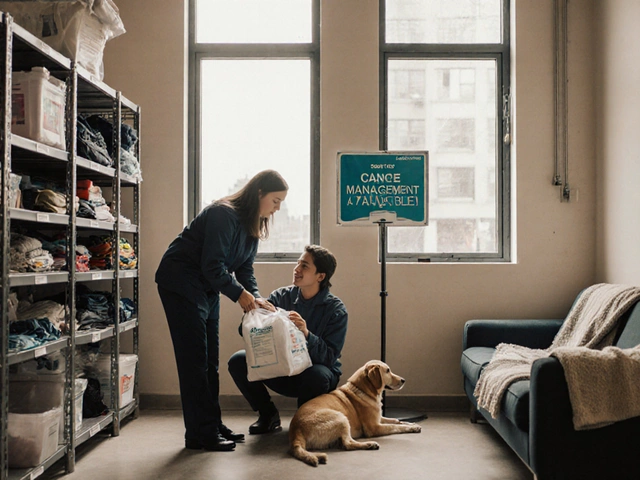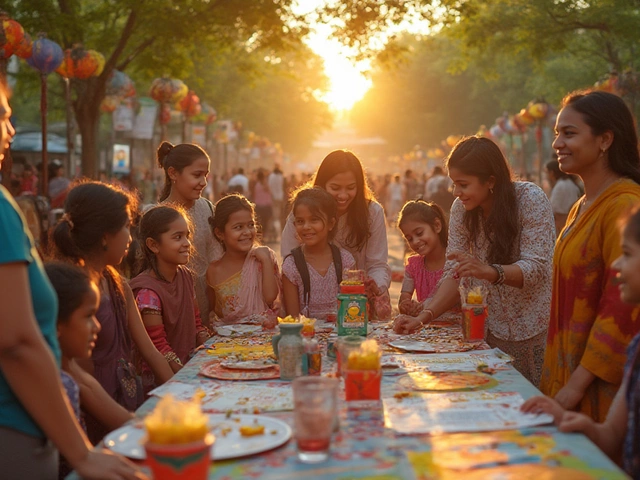The Virginia Food Box Program is a crucial initiative aimed at tackling food insecurity across the state. Imagine not knowing where your next meal will come from; this program aims to ease such worries for many families. But what exactly is it?
At its heart, the program provides boxes filled with nutritious food to those in need. It partners with local food banks, community organizations, and volunteers to distribute these boxes efficiently. It's not just about handing out food; it's about offering hope and stability to those who need it most.
- Introduction to the Program
- History and Background
- How It Works
- Eligibility and Access
- Community Impact
- Future Prospects
Introduction to the Program
The Virginia Food Box Program is designed to combat food insecurity and provide relief for families who struggle to put food on their table. Launched as a state initiative, it operates through a coordinated effort among food banks, local charities, and community groups. This network ensures that food boxes reach those who need them most efficiently.
With over 800,000 Virginians experiencing food insecurity, the need for such programs is significant. Through strategic partnerships and dedicated volunteers, the program has managed to serve millions of meals all over the state. It's about more than just providing sustenance—it's about fostering a sense of community and support.
How does it work? Well, the program sources food from donations, government support, and partnerships with farmers. These items are then packed into boxes containing a mix of staple foods like rice, canned vegetables, proteins, and dairy products. The idea is to offer balanced nutrition that can sustain a family for at least a week.
Funding and Support
The Virginia food box program receives funding from both state and federal sources, supplemented by generous contributions from local businesses and individuals. Community support plays a pivotal role in keeping the program running. Many volunteers, including local school groups and civic organizations, help in packing and distributing the boxes.
For many, these boxes serve as a critical lifeline. Not only do they support households in immediate need, but the program also aims to educate recipients on healthy eating and budgeting, promoting more sustainable living practices.
History and Background
The Virginia Food Box Program didn't just pop up overnight. It has roots that stretch back to the early responses to increasing food insecurity across the state. Interestingly, the whole concept of food boxes started gaining traction around the early 2010s, when community leaders realized the pressing need for a more structured approach to fight hunger.
Initially, various local charities attempted isolated efforts, but it quickly became apparent that a coordinated statewide program could amplify their impact. It was in 2015 that the state government, together with non-profit organizations, launched a pilot version of the Food Box Program. The trial ran in a few counties, and it was a huge success, showing just how vital such a program was.
Growing and Evolving
Improvements have been made over the years. In 2018, the program expanded to cover more regions and refined its distribution process. The introduction of technology helped streamline operations, making it possible to match food surpluses with demands efficiently. By 2020, even during the pandemic, the program adapted rapidly, ensuring no family felt left behind despite the logistical challenges.
Notable Milestones
One of the key milestones was achieved in 2021 when the initiative managed to distribute over one million food boxes, marking a significant achievement in its mission. This success attracted more partners, and now industries contribute products to bolster the food supply.
Despite the challenges, the program continues fitting itself to meet shifting circumstances, consistently seeking new avenues to provide better service to Virginia's communities. With a strong foundation in place, it is poised for continued growth and increased impact on reducing food insecurity.
How It Works
The Virginia Food Box Program is designed to deliver essential food supplies to families experiencing food insecurity. It all starts with sourcing food from local farms, grocery stores, and food manufacturers. The idea is to gather a variety of nutritious items, ensuring families receive a balanced selection of food.
Virginia food banks play a crucial role as they coordinate the collection and distribution efforts. Here's a simple breakdown of how the program functions:
- Collection: Food items are collected from multiple sources, including donations and purchases made possible through government and private funding.
- Packing: Once collected, volunteers and community workers pack these items into boxes. Each box is carefully curated to provide a full range of nutrients, including fruits, vegetables, grains, and proteins.
- Distribution: The packed boxes are then distributed to families in need through a network of community partners, including local charities, schools, and social services.
- Access Points: Various access points are utilized, such as drive-through events, home deliveries for those unable to travel, and pick-up spots at designated centers.
This program ensures food reaches people who need it quickly and efficiently. An important aspect is the collaboration with local communities, making sure the availability matches the specific needs of the area.
To keep track of the program's efficiency, many distribution centers use data analytics. They monitor how many food boxes are delivered and which areas have the highest demand. This helps optimize the process and prioritize areas that are most in need. Check out the table below for a glimpse at some typical numbers:
| Month | Boxes Distributed | Families Assisted |
|---|---|---|
| January | 10,000 | 8,500 |
| February | 12,000 | 10,200 |
Through consistent efforts and community support, the Virginia Food Box Program continues to be a lifeline for countless families across the state.

Eligibility and Access
Trying to figure out if you or someone you know can benefit from the Virginia Food Box Program? The good news is, it's designed to be pretty accessible. This program mainly targets individuals and families who are experiencing food insecurity. But, what does that mean for eligibility?
The eligibility criteria are based on income levels and family size, closely aligned with federal poverty guidelines. You might wonder if there’s a lengthy application process. Fortunately, the paperwork isn't overwhelming. Local partners, such as community organizations, often guide applicants through the necessary steps.
Income Qualifications
So, how are these criteria defined? Typically, if a household earns less than 200% of the federal poverty level, they qualify. It means more people can get assistance than you might think, especially given the current economic climate.
Make sure you have these documents ready:
- Proof of income (recent pay stubs, tax returns, etc.)
- Identification for each household member
- Proof of residency (utility bills or lease agreements)
Accessing the Program
Once you’ve determined eligibility, the next step is accessing the food boxes. Here’s where the community really comes into play. Local food banks or partnerships are the distribution points. They sometimes operate on a set schedule, ensuring that families know when and where to pick up their boxes.
Many locations even have drive-through options, making it simple and convenient to collect your food box without hassle. Some partners might even offer delivery services, especially for those unable to travel due to mobility issues or lack of transportation.
| Population Group | Percentage of Program Beneficiaries |
|---|---|
| Families with children | 60% |
| Seniors | 20% |
| Single individuals | 15% |
| Other | 5% |
Don’t underestimate the value of this program. Whether you need a hand temporarily or over a longer stretch, this initiative has your back. By meeting eligibility requirements and knowing how to access the resources, you’re well on your way to securing the essential support you need.
Community Impact
The Virginia Food Box Program has become a crucial ally for communities facing food insecurity. By providing essential food supplies, it helps bridge the gap for those struggling to make ends meet. This program doesn’t just change lives one box at a time; it can strengthen entire communities.
One of the most significant impacts is the sense of unity it fosters. Neighbors, local businesses, and volunteers come together to ensure that everyone has access to nutritious food. This solidarity builds trust and relies on local connections, making communities stronger.
The program's reach is impressive. By collaborating with over 50 local food banks and distribution centers, it ensures food doesn’t just sit in warehouses but gets to those who need it fast. These collaborations also help each community adapt the program to their specific needs, ensuring effectiveness at every level.
Real-Life Stories
Counties in Virginia like Fairfax and Richmond have seen these efforts change real lives. For example, in Fairfax, about 15,000 families receive monthly food boxes. These boxes contain staples like rice, pasta, canned vegetables, and proteins essential for balanced meals.
The program also works closely with schools, ensuring children have meals even when school is out. This is critical because many kids rely on school meals as their primary nutrition source during the week.
Economic Benefits
The food box program isn't just about feeding people; it has an economic ripple effect too. By easing the financial burden on food-insecure families, it allows them to allocate more in their budget for other necessities, which can boost the local economy.
Plus, the program supports local farmers by purchasing fresh produce. This helps sustain local agriculture, reducing supply chain logistics that sometimes make fresh food too expensive.
In summary, the Virginia Food Box Program does far more than fill bellies. It nourishes communities by fostering unity, supporting local businesses, and most importantly, ensuring that no Virginian has to worry about their next meal.
Future Prospects
Looking ahead, the Virginia Food Box Program is set to expand its reach and impact significantly. With rising food insecurity rates, especially post-pandemic, the program's role is more crucial than ever. Plans are underway to increase the number of distribution centers, making it easier for families to access assistance without traveling long distances.
The future also holds a promise of more diverse offerings in the food boxes. This means including items that cater to various dietary needs and preferences, thus ensuring everyone receives food they can use and enjoy. They're exploring partnerships with local farmers to supply fresh produce, which is a win-win for both recipients and the local economy.
On the tech front, the program is looking into using digital platforms to streamline operations. This might involve an app for families to request food boxes or check availability at nearby centers, making the process less daunting and more accessible.
Enhancing Community Engagement
Building a strong community network remains a priority. Plans include hosting workshops and events to raise awareness about food insecurity and how the community can help. Engaging volunteers, especially from younger demographics, is seen as vital to sustaining momentum and driving the program forward.
There's talk of integrating educational materials into the food boxes, like simple recipes or nutrition tips, which can empower recipients to make healthier food choices.
The goal is clear: no one in Virginia should worry about their next meal. With continued support and innovation, the Virginia Food Box Program is poised to make that goal a reality, reaching even more families and ensuring food on their tables.





